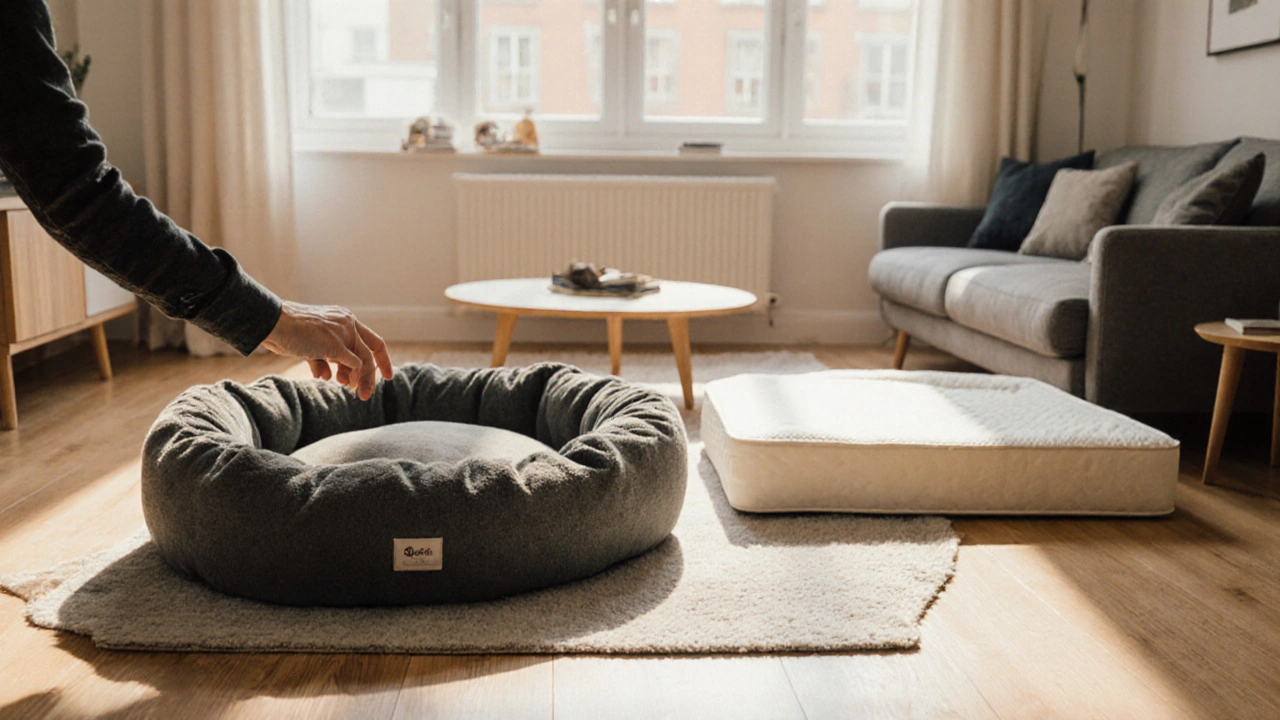Rectangular Dog Beds
When choosing a rectangular dog bed, a low‑profile, four‑sided sleeping surface designed for dogs of all sizes. Also known as standard dog bed, it fits neatly against walls or under furniture, giving your pet a cozy corner. These rectangular dog beds encompass easy placement, stable footing, and a shape that mirrors a dog’s natural loaf position. A rectangular dog bed requires a sturdy frame or anti‑slip bottom, which means the bed can stay put on hardwood or carpet without sliding. At the same time, it enables you to line up multiple beds in a row for a pack of dogs, creating a shared sleeping zone that promotes calm group dynamics.
Why Shape Matters
One of the most common upgrades for a rectangular dog bed is adding orthopedic dog bed, a mattress with extra support for joint health. Orthopedic dog beds influence long‑term comfort by evenly distributing weight, which is especially useful for senior dogs or large breeds prone to arthritis. Another popular variant is the memory foam dog bed, a high‑density foam that contours to a dog’s body shape. Memory foam dog beds enhance the rectangular shape’s stability while adding a plush, pressure‑relieving layer. Both options keep the fundamental rectangular footprint, so you still get the space‑saving benefits while tailoring the feel to your dog’s health needs. When you pair a rectangular base with these specialized layers, you create a sleep platform that supports posture, reduces pressure points, and can even help improve overall dog sleep health.
Beyond the mattress itself, a rectangular dog bed often becomes part of your broader pet furniture, functional pieces that blend pet comfort with home décor. Pet furniture influences how the bed fits into living rooms, hallways, or bedrooms, turning a simple sleep spot into a design element. Choosing a bed with removable covers, washable fabrics, or stylish upholstery lets you match the bed to your interior style and keep it hygienic. In addition, considering dog sleep health, the quality and routine of a dog’s rest when picking a bed is key: a cool, breathable surface helps regulate temperature, while a base that stays flat prevents rolling into uncomfortable angles. Placement matters, too—putting the rectangular dog bed away from drafts, near a quiet corner, or against a wall can reduce anxiety and encourage deeper sleep. By aligning the bed’s design with pet furniture trends and canine sleep health principles, you give your dog a dedicated, safe zone that fits your home’s flow.
When you’re ready to buy, keep a few practical tips in mind. Measure your dog from nose to tail while standing; add a few inches to ensure they can stretch out fully on the rectangular surface. Look for non‑slip bottoms or rubber grips that keep the bed steady on wood or tile. If you have a dog that likes to chew, choose reinforced edges or a cover made from chew‑resistant fabrics. For homes with pets that shed heavily, a removable, machine‑washable cover saves you time and keeps allergens down. Finally, think about longevity: solid wood frames, reinforced stitching, and high‑density foams tend to outlast cheaper options, giving you better value over years of use. With these considerations, you’ll pick a rectangular dog bed that not only fits your space but also supports your pup’s comfort and health. Below you’ll find a curated list of articles that dive deeper into training tools, nutrition, and everyday pet care—everything you need to keep your dog happy and thriving.

Round vs Rectangular Dog Beds: Which Shape Your Dog Prefers
Explore how shape influences dog comfort, discover which breeds thrive in round vs rectangular beds, and get a step‑by‑step guide to pick the perfect dog bed.
View more